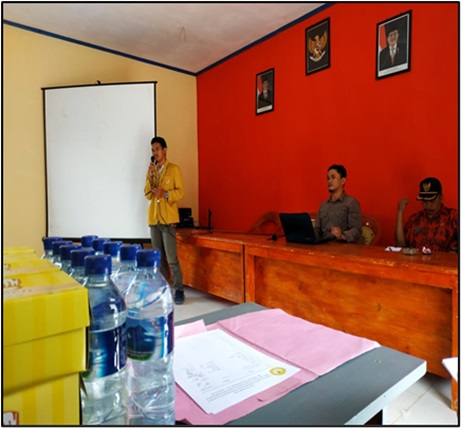Pencegahan Bencana Tanah Longsor Berbasis Pemberdayaan Masyarakat dengan Sistem Informasi Geografi di Desa Sirau, Kecamatan Karangmoncol Kabupaten Purbalingga, Jawa Tengah
Landslide Disaster Prevention Based on Community Empowerment using a Geographic Information System in Sirau Village, Karangmoncol District, Purbalingga Regency, Central Java
DOI:
https://doi.org/10.33084/pengabdianmu.v9i12.8373Keywords:
Landslide, Village Community, MitigationAbstract
Efforts to minimize the impact of landslides could be conducted by figuring out the mechanism of landslides so that mitigation could be prevented. Focusing on detailed mapping which potentially causes landslides should be increased continuously and entered into a database that is used for information on village profiles where it is usefully built up in the future. Mapping of landslides involved communities participating who are represented by the Community of Disaster Response (MASTANA) that needed to be developed in villages with huge landslides potentially. Landslide mapping is most important due to the source of maps that had been issued by the Center for Volcanology and Geological Disaster Mitigation (PVMBG) ESDM has a small scale to reach village territory. The result shows that only MASTANA members prepared when a landslide occurred when it could be predicted based on a visual observation. Initial detection of landslides potential and notes on Geographic Information System are used to an information about landslides spread out.
Downloads
References
Damanik, M. R. S., & Restu, R. (2012). Pemetaan Tingkat Risiko Banjir dan Longsor Sumatera Utara Berbasis Sistem Informasi Geografis. JURNAL GEOGRAFI, 4(1), 29-42. https://doi.org/10.24114/jg.v4i1.7926
Direktorat Geologi Tata Lingkungan. (1981). Gerakan Tanah di Indonesia.Jakarta: Direktorat Jenderal Pertambangan Umum. Departemen Pertambangan Dan Energi. https://doi.org/10.37598/tameh.v7i1.28
Direktorat Vulkanologi dan Mitigasi Bencana Geologi (DVMBG). (2005). Manajemen Bencana Tanah Longsor. http://pikiranrakyat.com/cetak/2005/0305/22/0802.
Karnawati., D., 2002. Bencana Alam Gerakan Massa di Indonesia dan Upaya Penaggulangannya, Jurusan Teknik Geologi UGM, Yogyakarta. https://onesearch.id/Record/IOS2726.slims-68756
Pramudjiono., Karnawati D., 2008. Penanganan Bencana Gerakan Tanah Di Indonesia. Makalah Penanganan Gerakan Tanah Di Indoensia, Jurusan Teknik Geologi UGM, Yogyakarta. http://pirba.hrdpnetwork.com/e5781/e5795/e6331/e15201/eventReport15218/MakalahPenangananGerakanTanahdiIndonesia.pdf
Rahman, A. (2010). Penggunaan Sistim Informasi Geografis untuk Pemetaan Kerawanan Longsor di Kabupaten Purworejo. Bumi Lestari, 10(2). https://doi.org/10.23960/jgrs.2020.v1i1.16
Wang, F., Xu, P., Wang, C., Wang, N., & Jiang, N. (2017). Application of a GIS-Based Slope Unit Method for Landslide Susceptibility Mapping along the Longzi River, Southeastern Tibetan Plateau, China. ISPRS International Journal of Geo-Information, 6(6), 172. https://www.mdpi.com/2220-9964/6/6/172

Downloads
Published
How to Cite
Issue
Section
License
Copyright (c) 2024 Adi Candra, Siswandi Siswandi, Indra Permanajati

This work is licensed under a Creative Commons Attribution-ShareAlike 4.0 International License.
Authors who publish with this journal agree to the following terms:
- Any article on the copyright is retained by the author(s).
- Author grant the journal, right of first publication with the work simultaneously licensed under a Creative Commons Attribution License that allows others to share work with acknowledgment of the work authors and initial publications in this journal.
- Authors are able to enter into a separate, additional contractual arrangements for non-exclusive distribution of published articles of work (eg, post-institutional repository) or publish it in a book, with acknowledgment of its initial publication in this journal.
- Authors are permitted and encouraged to post their work online (e.g., in institutional repositories or on their websites) prior to and during the submission process, as can lead to productive exchanges, as well as earlier and greater citation of published work.
- The article and any associated published material is distributed under the Creative Commons Attribution-ShareAlike 4.0 International License










